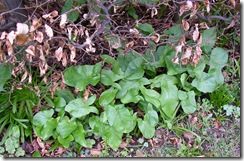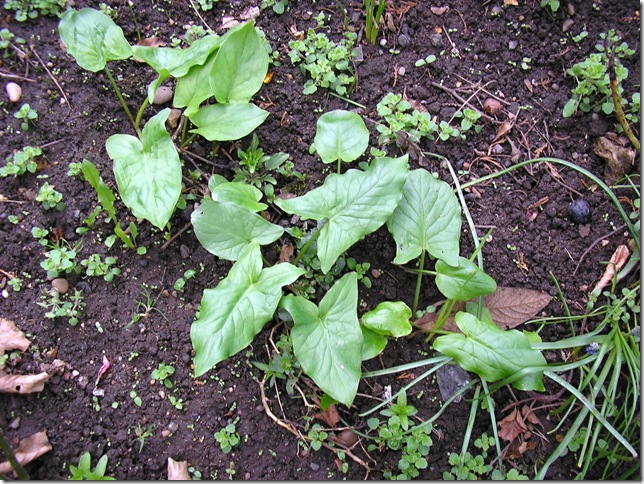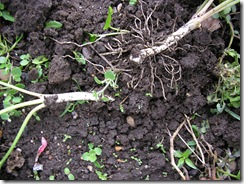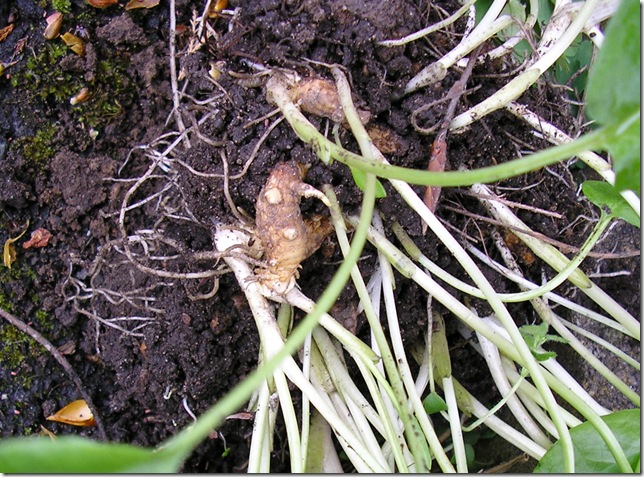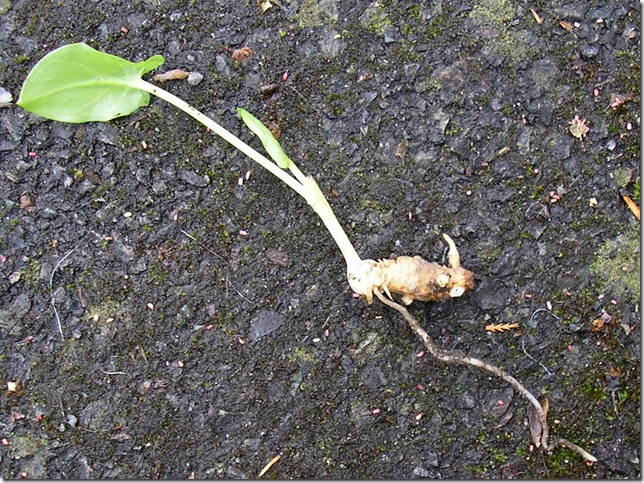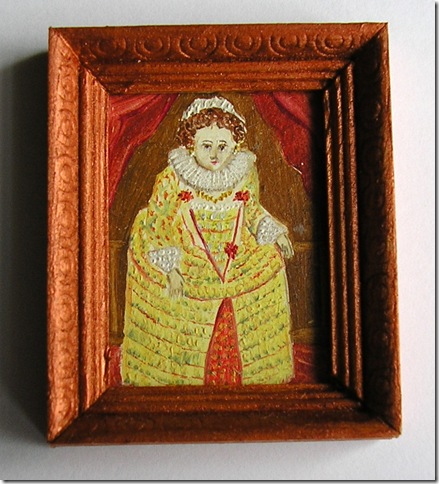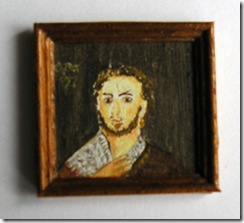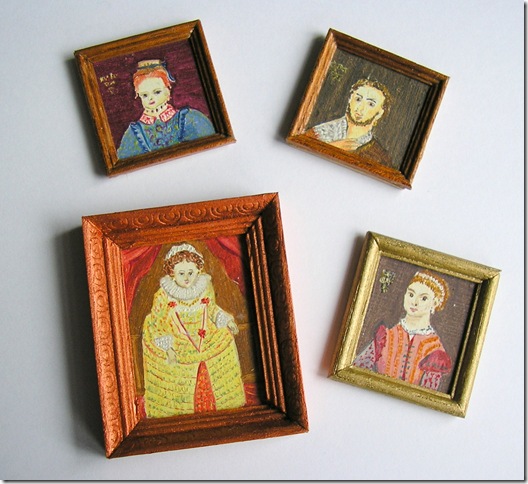These are growing under my hedge today in great profusion, much to my annoyance as I have tried to eradicate them for the last 20 years. Although the beech hedge, which they love so much, has been planted only 30 years it is quite fitting that they grow in Shakespeare’s county and have probably been doing so since his players performed here.
The plants that irritate me also irritated the Elizabethans, for they are Lords and Ladies, also known as Cuckoo Pint and various other names. They won’t flower for several weeks yet but the leaves are very distinctive.
The Elizabethan irritant, and the reason I wear rubber gloves around these plants is contained in the roots.
I haven’t unearthed these very carefully. The trick, for a modern gardener and her forebears is to dig them up with extreme caution to keep the knobbly bits intact on the ends.
With care you can even separate out one plant, underground roots and the rhizome from which numberless armies of plants will spring even if you dig the whole bed and sieve the soil. As I did two years ago. All to no avail, they’re back.
But if I could travel back in time five hundred years I’d be delighted. The knobbly bits were prized by the Elizabethans, who peeled them, chopped them, boiled them up and sieved them until they had a thick white paste. This they spread over their lace ruffs and collars, which were arranged on sticks or spread flat until they had dried stiff as a board. Various costume history books will tell you that starch was first imported from continental Europe in the mid 1560s, after which the giant cartwheel ruffs became possible.
But I’m willing to bet that the roots of Lords and Ladies continued to be used in country areas for many years, because they are so prolific, difficult to get rid of and free. No matter where you look in portraiture, stiffened collars of one form or another abound, continued as required court dress into Jacobean times and surviving as lace toppings and edges to boots and collars to the Restoration. Perhaps that’s why the plants are still called Lords and Ladies, after those who used them to follow the fashion right up to the court.
What the history books neglect to mention, but any gardener knows, is that these roots are caustic and irritant. My interest in history and desire to prove a theory does not extend to making up the paste and spreading it on my collar but if we look with enlightened eyes at many of the portraits of Queen Elizabeth 1st standing so stiffly upright, mayhap we can see why. Her collar is killing her. So, of course, is her white lead make up that’s slowly poisoning her and right down the front of her dress is a busk, a thing like a long wooden spoon handle, that will stick into her chest if she attempts to bend a bit. I’m sure you remember that she was extolled as a paragon of cleanliness for having a bath once a year whether she needed it or not. Also, anti perspirant hadn’t been invented. So, sweaty, smelly, itchy, jabbed, caked and sticky with a glued-on horse hair wig and rotten teeth. Gloriana! (and a one way ticket to the seaside, thank you.)
A riffle through the pages of any art book with four and five hundred year old portraits is equally enlightening. Does anyone with a stiffened lace collar look as if they would happily swivel their eyes around as long as they were allowed to keep their heads still? In the early seventies I had a friend who was a nurse, she had a non caustic starched collar that left a red weal round her neck by the end of the day. If you caught her in uniform, she certainly moved less freely than she did down the disco.
How fortunate most of us are in modern times to have such comfortable clothes. There is hardly anyone on the planet without a rag to their back; such textile wealth would have been unimaginable to people of the past. In many cultures not just any garment but those that utilised the most difficult fibres to obtain, the long unbroken thread, were the symbol of in-your-face one upmanship. From the Ancient Egyptians to the Elizabethans, the long spun fibre was the prized piece of technology that that distinguished the rich from the rest. Whether used to string a broad collar or weave a lace ruff the conspicuous display right by the face conveys a peacock message impossible to ignore. They strut right past the hoi polloi, stiff, unbending, with their noses in the air, looking neither to right nor left. They are the Lords and Ladies and only you and I know that they would love to rip that fancy collar off and have a jolly good scratch.
Coming soon – Elizabethan breeches, were they really full of fleas? (Probably, you might want to invest in some calamine lotion before you read this.)

